Not everyone has access to a perfect live room with 20-foot ceilings and sound treatment fit for an orchestra. But you don’t necessarily need unlimited space or money to achieve a huge, wide drum sound! Considering you’ve got your close microphones covered, there are a few simple tricks that can elevate your recorded drum sound without the need for more than two mics and just a bit of horizontal space. After packing these tricks into your repertoire, you’ll walk away from each session with a ton more options and wider, bigger sounding drums!
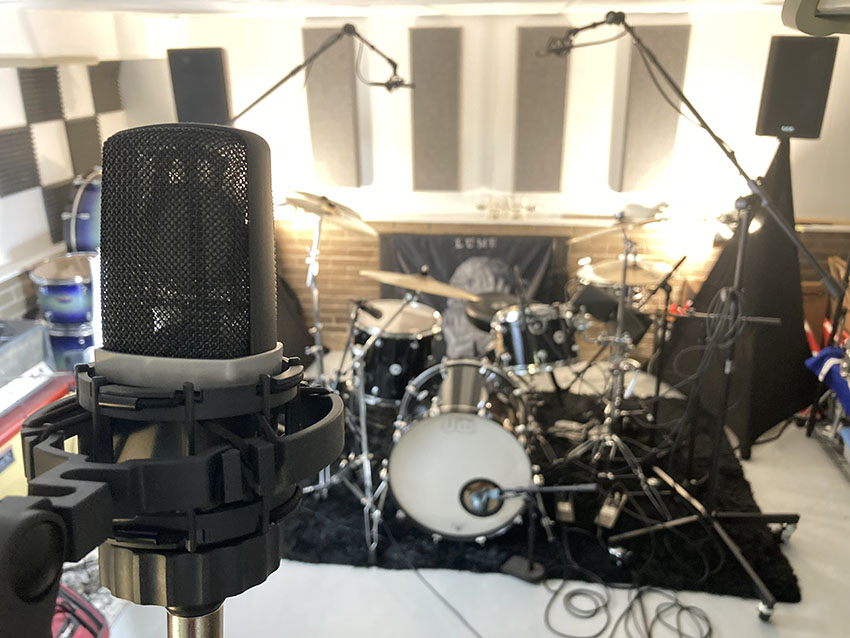
Where are Your Room Mics?
The very first thing to consider is the possibility of adding a room mic or two to the mix. A room mic captures the sound coming from an entire room. Obviously, a large, treated studio will have a beautiful sounding room. But don’t worry about your own room not sounding “perfect,” because a single room mic or stereo pair of them will add a wealth of options when it comes to the mixing step.
What about distance though? This is where experimentation comes in. A nice rule of thumb to start with is get your room mics facing the kit about 6 feet away to eliminate any pesky phase that might squash your tones. For example, if you’re using a stereo pair of condenser mics, just use a tape measure from the center of your kit (typically snare or slightly above the kick drum) and align both mics exactly 6 feet away. Height is also up for debate, but because every room is different, you may want to align your mics higher or lower based upon what the mix and room are giving you. After that, simply pan your mics in the mix left and right and poof! Your stereo room mics are ready to sit somewhere in the mix.
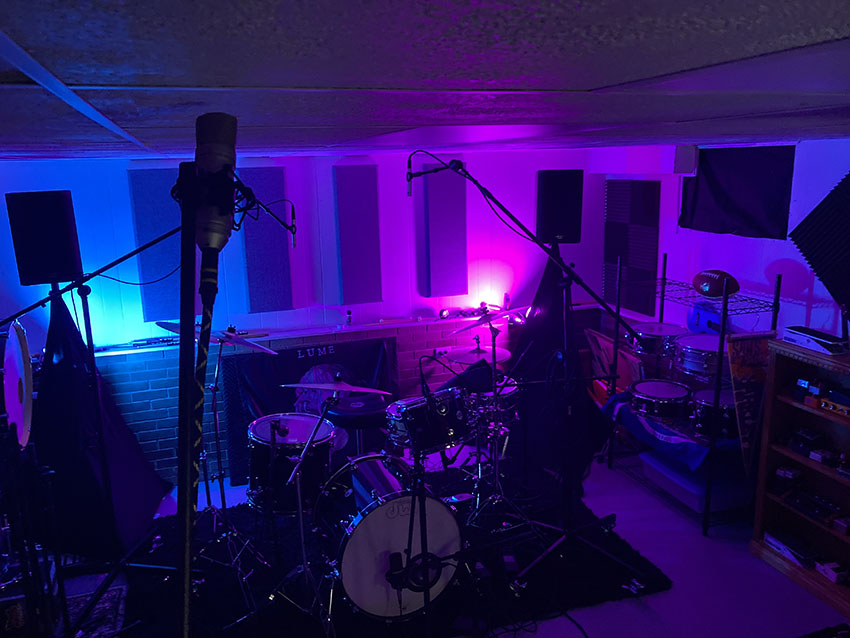
Now, if you want more ambience, feel free to back those mics up even further. Some of the greatest drum recordings of all time featured room mics more than 20 feet away, or down the hall from live rooms, in bathrooms adjacent to the room, outside a window, etc. For an even wider feel, place the mics equidistant away from the kit but facing left or right respectively. Bringing your walls into play can also be a cool trick. This is done by simply facing your mic capsule toward a wall to capture the sound waves striking it and bouncing off. You can see how experimentation will lead to some great and horrible tones, but it really all depends on your room and what’s around the kit.
Related: Your Drums Will Thank You for Choosing the Right Overhead Microphones
We look at, listen to, and compare three distinct types of microphones you can use as overheads for your drums | Read »
Your Garage Hides Treasure!
Now we’re venturing into some unorthodox territory with the Queen of Adventure Recording. The great Sylvia Massy once mentioned in a lecture on her book tour for “Recording Unhinged” that she would gaff tape a Shure SM-57 to each end of a garden hose with capsules facing into the hose for an incredible, D.I.Y. reverb effect. The tape included covering the capsule vents on each 57 so that you’re only capturing the sound inside the hose. When placed under the drum kit on two sides of the kit you’re able to capture an incredible stereo reverb that almost doesn’t seem possible with such simple means.
Though this is a simple way to get a huge room-type sound in a small footprint, you’ll want to focus on post-production EQ and compression to really reign in those low-mids. Now your small room sounds fat, wide, and boomy all with the help of a garden hose!
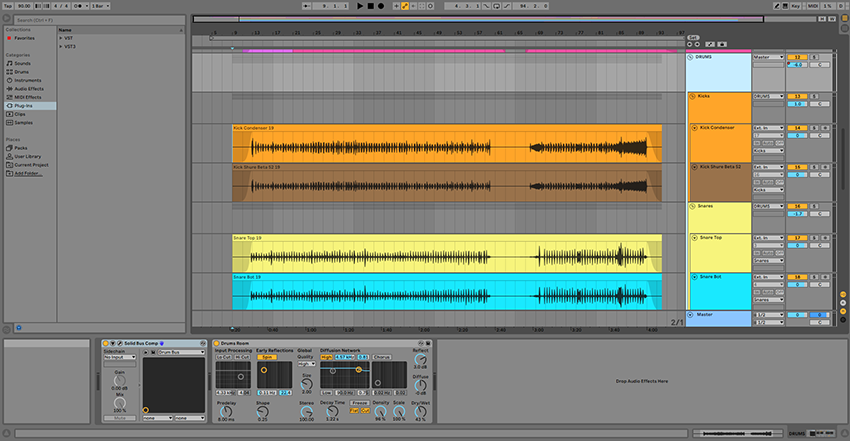
Fix It in Post… No really!
But what if you don’t have room to add in another mic or two for real, live room recording? Well even though the recording golden rule is to typically fix any issue before post-recording mixing, you can in fact fix some stuff in post. A ton of DAWs offer standard plug-ins for reverb, EQ, compression, and, most importantly in our context, room emulation. Take Ableton Live for example, they offer a wealth of “room” reverbs that are simply reverb algorithms taken from real sampled rooms so you can fake it ’til you make it! Routing your close mics into a separate reverb channel with one of these room reverbs added and mixing from there can be a great last resort for getting a sought-after, large drum sound without the need for more mics, inputs, or… room!
So even though these techniques aren’t exactly setting the world on fire, they can be a handy method in your bag of tricks when you come to a speed bump in your next recording session. The most important thing to remember though is to experiment, learn your room, and build upon your mixing strengths!

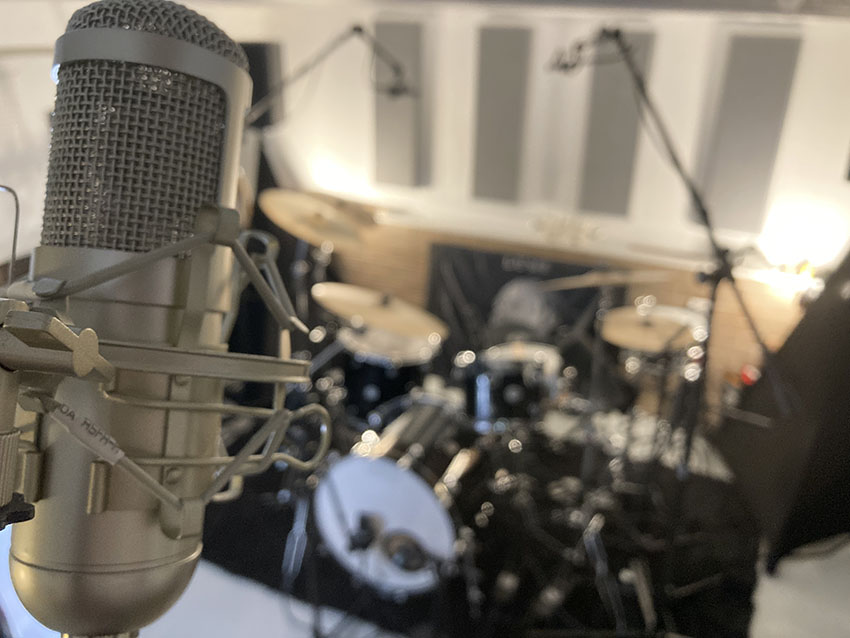
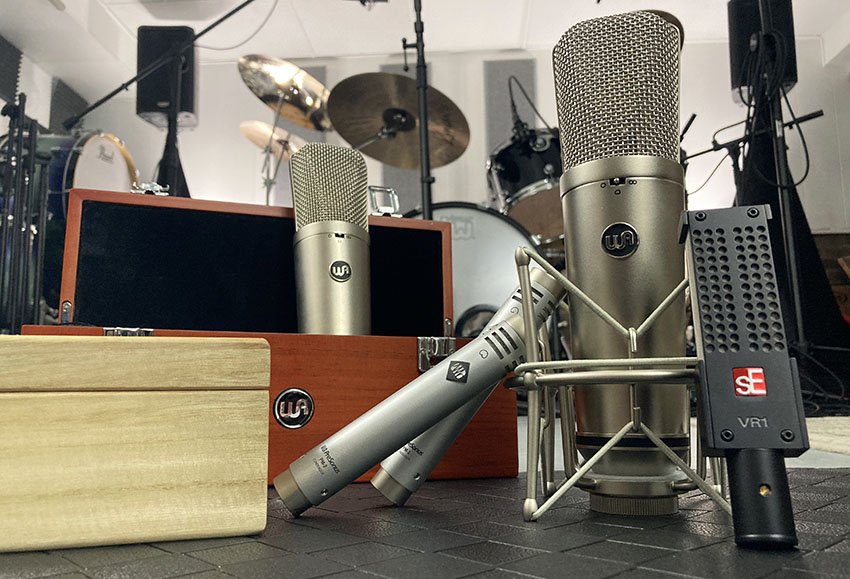


Leave a Reply